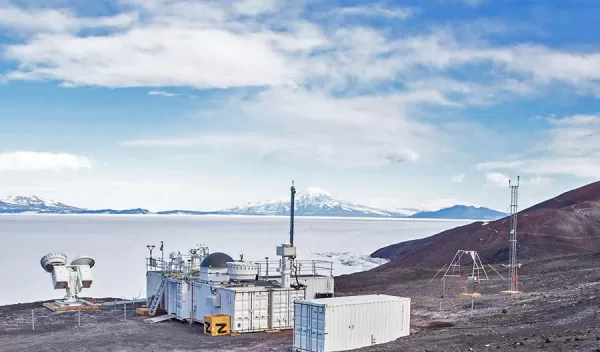
Drizzle at sub-zero temps recorded in Antarctica
When the temperature drops below freezing, snow and ice often follow. But that's not always the case in Antarctica, where for the first time, drizzle has been recorded at temperatures well below freezing.
Meteorologists define drizzle as water droplets smaller than 0.5 millimeters in diameter, or about one-five-hundredth of an inch.
Using ground-based and satellite measurements, researchers recorded drizzle at minus 13 degrees Fahrenheit and below lasting for more than 7.5 hours at McMurdo Station, in Antarctica. Previous reports recorded supercooled drizzle at these temperatures, but only for brief durations. The presence of drizzle over several hours could have implications for climate model predictions. The NSF-funded researchers published their findings in the Journal of Geophysical Research: Atmospheres.
"We're familiar with drizzle as a process that takes place in warm temperatures," said atmospheric scientist Israel Silber of Penn State, lead author of the study. "At lower temperatures, processes like ice formation and growth make the probability of drizzle significantly lower."
Data collected from laser measurements indicated the presence of water particles -- hydrometeors -- that were nearly spherical, which can indicate drizzle drops. Analysis of these data combined with other ground-based and satellite measurements confirmed that the particles were indeed drizzle.
"Not knowing when aerosols [fine sprays], both in pristine and polluted atmospheres, are going to grow into particles or remain in the gas phase is a problem for models of their radiative properties," says Peter Milne, a program director in NSF's Office of Polar Programs. "These uncertainties limit how well atmospheric energy budgets can be calculated."


